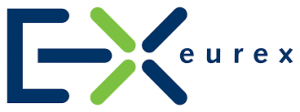Before the Commodities Futures Trading Commission fined 3 Red Trading and its Chief Executive Officer for spoofing in 2016, the company and its CEO were fined by four governing bodies on two continents for the same type of activity.
3 Red Trading has already been sanctioned by the German exchange Eurex, the French regulator Autorité des Marchés Financiers (AMF) (translated to authority of financial markets), along with the Intercontinental Exchange (ICE) in Europe.
In December 2016, the CFTC issued a $2.5 million fine against 3 Red and its CEO Igor Oystacher for a spoofing scheme on the CME; the CME recently issued- in December 2017- a separate fine of $35,000 to 3 Red Trading trader, Daniel Ostroff, in yet another spoofing scheme.
The CME failed identify that Ostroff worked for 3 Red Trading at the time and declined to comment to The Industry Spread and this reporter when proof was provided.
An industry source has said that 3 Red Trading accounts for as much as 50% of all trades on the CME in a typical day.
Spoofing is a form of market manipulation which orders are placed but not executed and designed simply to drive the price of a security in a certain direction.
While market manipulation has always been illegal, spoofing was identified, defined, and outlawed by Dodd/Frank in 2010.
Here is part of the Eurex findings.
 “Since the beginning of the year 2013, in the context of an order book analysis, HUST (the regulatory arm of Eurex) noticed that in numerous cases, Mr. O (Oystacher) filled the orderbook on the one side with several orders with at least two different price limits which were closest to the current price, while on the other side he mostly entered- in comparison to the numerous orders- a smaller order.
“Since the beginning of the year 2013, in the context of an order book analysis, HUST (the regulatory arm of Eurex) noticed that in numerous cases, Mr. O (Oystacher) filled the orderbook on the one side with several orders with at least two different price limits which were closest to the current price, while on the other side he mostly entered- in comparison to the numerous orders- a smaller order.
“Immediately before or after the execution or partial execution of these smaller orders, the remaining orders with varying price limits were deleted in the majority of the cases.”
ICE found that Oystacher engaged in spoofing on that exchange in 2012.
“Mr. Oystacher’s trading involves the entry of multiple buy or sell orders at the best bid or ask price respectively. In addition, large opposing orders are entered at best offer or bid prices respectively with concealed volume. Finally, the multiple buy or sell orders are then deleted without trading and simultaneous sales or purchases take place at or through the best bid or offer respectively. The volumes actually traded, and the positions held by Mr. Oystacher, are much smaller than the bids and offers entered. It has also been indicated that this trading is pre-programmed, so the complete pattern can be executed automatically.”
 According to an English translation of the AMF findings, Oystacher engaged in a similar scheme with the futures contracts for the CAC40 – the major index of the French Stock Market – in 2012.
According to an English translation of the AMF findings, Oystacher engaged in a similar scheme with the futures contracts for the CAC40 – the major index of the French Stock Market – in 2012.
Here’s part of an English language translation of the AMF findings.
“As of September 14, 2012, Mr. Igor Oystacher has manually placed orders on the Future CAC40 market by using a trading platform that allows access to information on the order book.
“Fifteen days later, on October 1st, 2012, Euronext requested an explanation to Advantage Futures about the interventions of Mr. Igor Oystacher on the Future CAC 40 contract, in particular on the reasons that led to the entry of these orders and to cancel them consecutively on a short time.”
Advantage Futures is a clearing house which 3 Red Trading used and they have also been fined separately by the CFTC, for their role in 3 Red’s Spoofing scheme at the CME. The CFTC even noted the prior sanctions in its finding.
“During the relevant period, Advantage, a futures commission merchant (FCM), registered with the Commission (CFTC), and its Chief Executive Officer Joseph Guinan, failed to diligently supervise the handling of certain commodity interest accounts, despite being on notice from three exchanges about what they characterized as unlawful trading in several futures contracts by one of Advantage’s customers (while 3 Red is not named, that is who the CFTC is referring to). Advantage also had deficient risk management and credit risk practices for which its Chief Risk Officer, Respondent (William) Steele, was responsible.”
When the CFTC issued a press release announcing a fine against Advantage Futures in September 2016, it failed to mention that the client they were serving was 3 Red, let alone that another regulator had found them culpable with 3 Red in a separate scheme.
The CFTC fined Advantage Futures $1.5 million for their role in the scheme.
 Along with the three regulators already mentioned, the CME also fined Oystacher in yet another spoofing scheme: “The Panel also made the following findings: 1) on several dates between May and July 2011, Oystacher entered bids and offers in Silver, Gold and Copper futures contracts in such a manner so as not to have the requisite intent to trade at the time of order entry.”
Along with the three regulators already mentioned, the CME also fined Oystacher in yet another spoofing scheme: “The Panel also made the following findings: 1) on several dates between May and July 2011, Oystacher entered bids and offers in Silver, Gold and Copper futures contracts in such a manner so as not to have the requisite intent to trade at the time of order entry.”
Oystacher was fined in 2014 for this scheme in the amount of $150,000 and suspended from trading for a month.
While the CFTC fined Oystacher for a scheme for trades which were also on the CME, this appears to be yet another scheme: “Specifically, the Order finds that Oystacher and 3Red intentionally and repeatedly engaged in a manipulative and deceptive spoofing scheme while trading the spot-month contracts in the E-Mini S&P 500 futures contracts on the Chicago Mercantile Exchange (CME); crude oil and natural gas futures contracts on the New York Mercantile Exchange (NYMEX); copper futures contracts on the Commodity Exchange Inc. (COMEX); and the volatility index (VIX) futures contract on the CBOE Futures Exchange (CFE) on at least 51 trading days between December 2011 and January 2014.”
A message left with Advantage Futures, which is based in Chicago, was left unreturned.
3 Red Trading also has its main office in Chicago, and another office in New York.
3 Red Trading is a proprietary trading firm- meaning it trades for its own account- and an email left with the company was also left unreturned.
An email to Dennis Holden, the public affairs officer with CFTC, was left unreturned.
Chris Grams, public affairs officer at the CME Group, said, “We don’t have anything to add to your reporting beyond the disciplinary actions you mentioned.”
The six citations suggest that rather than a one-off incident, that spoofing is the prevailing trading strategy at 3 Red Trading. Furthermore, it suggests that the punishment implemented by these regulators is wholly inadequate as it has not stopped 3 Red from continuing to engage in the same activity.
As part of its investigation of 3 Red, the CFTC had Hendrik Bessembinder, a professor of finance at Arizona State University, analyze Oystacher’s trades; in his report, he stressed that spoofing is not a victimless crime.
“Spoofing strategies potentially harm other traders and damage the integrity of the overall market in two ways. First, they can provide a false impression of available liquidity on the side of the market where the spoof orders are entered. In the hypothetical example above, the large spoof buy order at $10 can give other traders the impression that plentiful liquidity is available on the buy side. However, that apparent liquidity is transient, and disappears as the spoof order is canceled. Second, spoofing potentially induces other traders to make traders based on false information. In the example, the trader who reacts to the spoof order by entering five contracts on the buy side makes a purchase at $10, effectively providing liquidity to the spoofing trader’s sell order. However, she would not have made that purchase had she known that spoofing traders buy order did not represent genuine trading interest.”
Indeed, spoofing is akin to the use of performance enhancing drugs in sports; the people hurt most are the ones trying to do things honestly.








